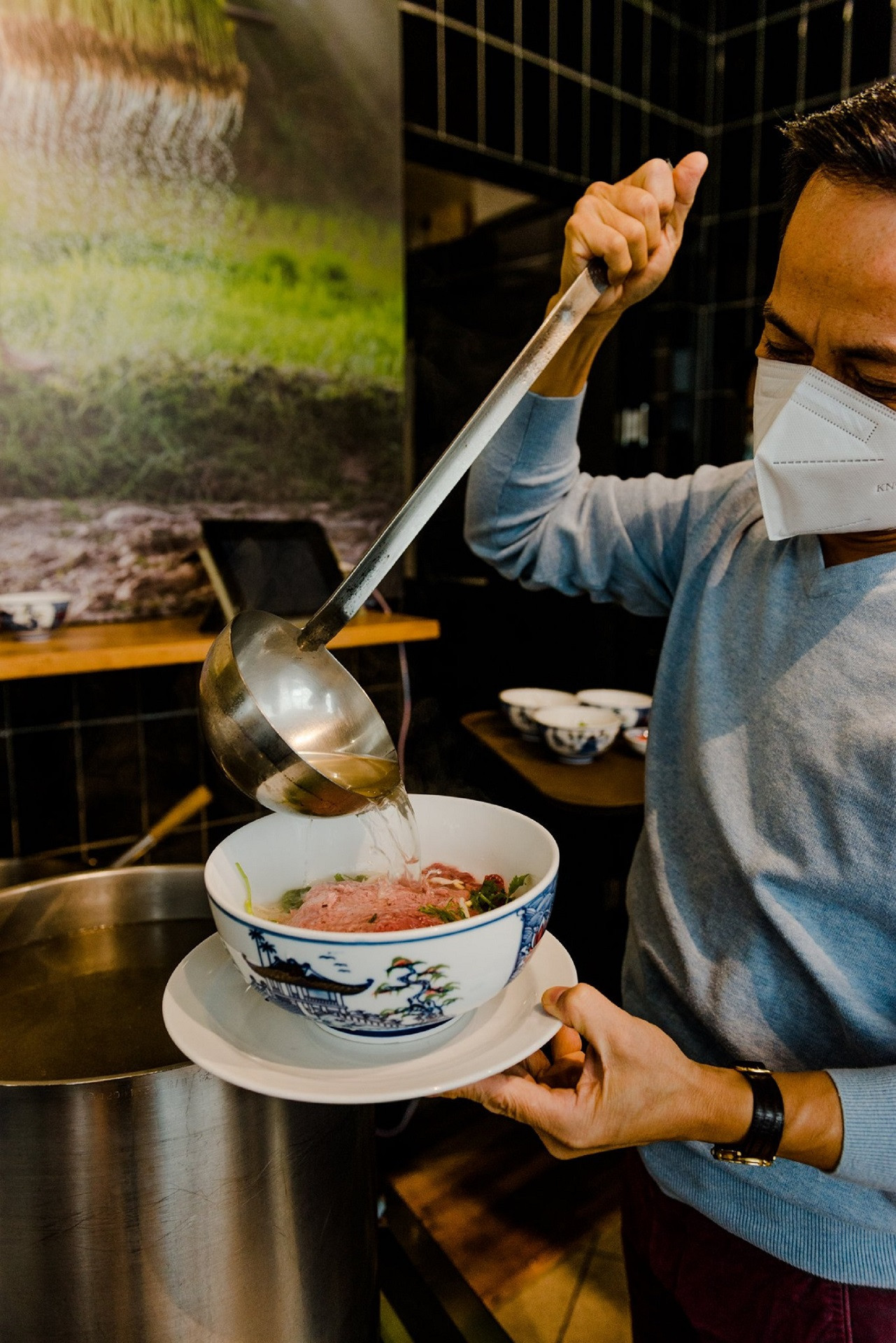
Born in Bratislava, Thao Huong’s parents are from the north of Vietnam. She is the founder of Phočkáreň (Pho House), a restaurant that specializes in Vietnamese dishes. According to Forbes Slovakia, the restaurant had turnover of over 3 million euros, or $3.4 million a year, in the 2018-2020 period.
Once working for Heitman, a foreign investment fund in Slovakia, and Sharow Capital, an asset management and real estate investment company, Huong felt confident about managing the family-run restaurant chain together with her cousin Thang Tran from Nam Dinh, Vietnam, who is the chef.
In 2023, the restaurant chain had revenue of $6 million. Huong and Thang are running three Phočkáreň restaurants and other Phočkáreň restaurants operate under the franchise mode. They employ 100 workers, and two thirds of them are of Vietnamese origin.
Vietnamese dishes in Europe
Huong’s father is from Hanoi and mother from Nam Dinh. Huong has a strong attachment to Vietnamese dishes prepared in her mother’s kitchen.
“We usually organize parties gathering all relatives in Slovakia, where we sit around a tray instead of a table, which is quite different from Eastern European culture,” Huong said.
Huong visited Vietnam for the first time at the age of 10. She was excited about the landscapes and dishes in Vietnam. The trips to Vietnam made her realize that Vietnamese dishes are diverse and attractive with original taste.
She then wanted to run a restaurant of her own, specializing in Vietnamese dishes, where she can recreate family meals and serve traditional dishes like the ones her mother cooks.
However, it was not easy to implement the plan. Her cousin, Thang Tran, was not sure if they could succeed with the startup.
However, Huong did not give up.
She noted that European youth like cultural events, such as music festivals. So, she decided to set up a stall at Grape music festival which gathered 30,000 participants.
They prepared 1,000 bowls for sale at the festival. and they all sold out.
In 2016-2017, at shopping centers in Slovakia, there were not many food choices for clients, except fried chicken, hamburger and fried potatoes. Huong decided to open the first restaurant at a large shopping mall, providing hot and fresh dishes.
At that time, 100 percent of the staff were Vietnamese, which was considered a great advantage over other restaurants, who used Slovakian and Chinese chefs as well. She wanted to serve genuine pho.
The restaurant served a wide range of products from bun bo Nam bo (Southern Vietnamese beef noodle salad), goi xoai (mango salad), nem ran (spring rolls), bun cha (kebab rice noodles) and fried rice. The three restaurants sold 1,300-1,500 bowls daily.

To make genuine Nam Dinh beef pho, Huong selects materials very thoroughly from prestigious supply sources in Slovakia. Beef bones are simmered for 10-12 hours with spices such as anise, cinnamon, cardamom, and fish sauce, while 100 percent of dry rice noodles are imported from Vietnam.
“Beef here is good with high quality, but spices are not as good as that from Vietnam,” Thang said. “We try to make pho which is 90-95 percent similar to the original Nam Dinh pho, and we have upgraded the processing of making pho to create high-quality pho, which is not just a street dish."
Encouraged by the success from Bory shopping center, Huong has opened two more restaurants at Avion, and Eurovea shopping centers in December 2018 and February 2019.
Huong is trying to take full advantage of social networks to introduce pho to young diners in Eastern Europe.
Huong said her pho chain once experienced tough days during Covid-19. In early 2020, Slovakia imposed lockdowns to prevent the spread of corona virus. The sales of Phočkáreň restaurants dropped by half just overnight, while the revenue dropped by 80 percent the next days.
“However, our great efforts helped the restaurants attract more clients and 70 percent of them return for second and subsequent times,” she said.
In 2020, the revenue of the restaurants just decreased by 10 percent compared with 2019. In 2021, the revenue regained the 2019 figure.
Linh Trang - Do An